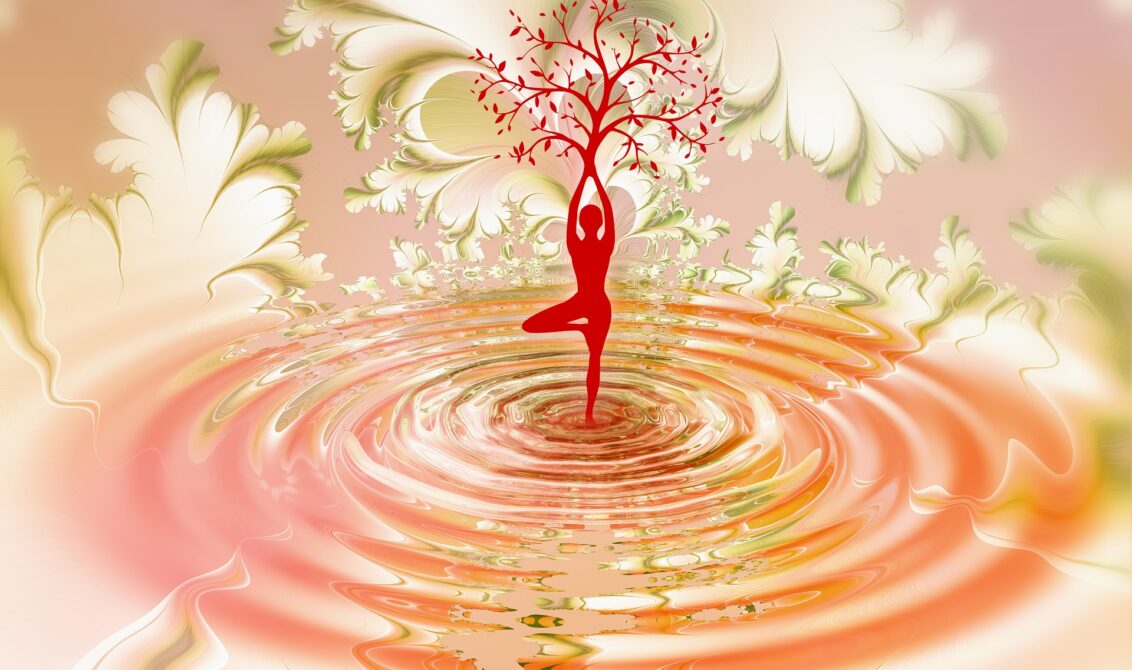by Evon Stone Rubenstein/Amy Wheeler for Holistic Healing News Magazine
When you do yoga postures, are you focusing on the sensations inside of your body or are you wondering if your form looks “correct” or are you conforming to the way the teacher or other students look?
This difference is big, and it defines your practice. Interoception and Proprioception are new buzzwords in the field of Yoga. Interoception means you can sense the organs inside of you, their movements and sensations. Proprioception means that a person can feel their muscles, tendons and bones and use the sensations to get feedback about how the outside of the body is being placed.
Focus on what is happening inside of you. The mind and nervous system are very linked and they are constantly giving you feedback, in an attempt to create balance or homeostasis. As you move through your yoga practice, if you “tune-in” you can find all the different aspects of you coming into balance. Physical sensations like one hip being higher than the other, breath balance where inhalation is equal to exhalation, mental balance when you do not feel anxious or depressed….you get the idea. Your practice becomes a way to check-in with yourself daily. It helps you notice what parts of you are in balance and out of balance, so that you can find your Optimal State of Living.
Self-Empowerment: Your Yoga Practice
What would it be like to have a teacher empower you? To tell you to listen to the internal sensations and decide what you want to do and don’t want to do? To teach you how to connect deeply with yourself and then the teacher gets out of the way so that you can commune in that space (with yourself).
Unfortunately, this is not usually how yoga is taught. Many times, you are asked to put your body into a position and then the teacher judges you and tells you if your posture matches the idea in his or her mind and you get “corrected.” Sadly, this is a way of disempowering your practice and giving power to the teacher. And who knows if that teacher has a strong understanding of the human body and how it works. You may often come away from class feeling like you pushed too hard or maybe even injured yourself. It is so easy to do when wanting to compete and keep up with all the other people in the class.
What happens when you bring your body in and out of a unique posture? Now can you add breathing synchronized with the movement and finally, link your mind to the breath and the internal sensations that are happening in your body?
Your breath is a powerful feedback mechanism to determine if you should continue to practice a particular yoga pose. Knowing when to come out of a pose at your discretion and just check in with yourself, makes you more self-directed and self-empowered, which is the goal of an Optimal State yoga practice.
Your Changing Body, Your Changing Yoga Moves
What does a proper sequence of postures look like in a yoga class? First, many beginners and even some advanced practitioners are not really connected to their body. They are not sensing and feeling the parts of the body that are moving.
Learning what your body and your mind needs is important. It doesn’t matter if you find a particular teacher that sequences in a way that works for your body, or you learn to do a home practice. Either way, be sure that you are getting exactly what you need out of your practice. Don’t just go along with what the yoga teacher tells you to do, thinking that somehow you need to keep up or please the teacher. Yoga is supposed to nourish you and make you feel better, not worse!
Explore How Yoga Can Be Used in Your Current Practice
We invite you to check out our weekly yoga classes at Kharma Life Yoga Center training programs. Join us for the Optimal State Therapeutic Foundations of Yoga 200-hour Teacher Training which starts in March 2019, in Phoenix, AZ. This would be a wonderful program for healthcare providers like Physical Therapists, Occupational Therapists, Massage Therapists, and Psychologists to explore how Yoga can be used in their current practice. All yoga practitioners are welcome if you are ready to share your joy with others.
ABOUT THE AUTHORS: Evon Stone Rubenstein is the lead faculty for Therapeutic Foundations Yoga. Amy Wheeler, PhD, is Program Director for a Therapeutic Foundations Yoga Teacher Training. You can find out more about the 200-hour Teacher Training at A-Path-To-Balance.com, KharmaLifeCenter.com or AmyWheeler.com.
